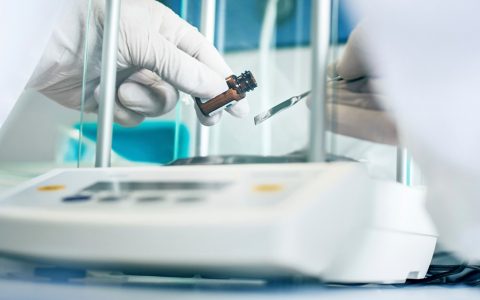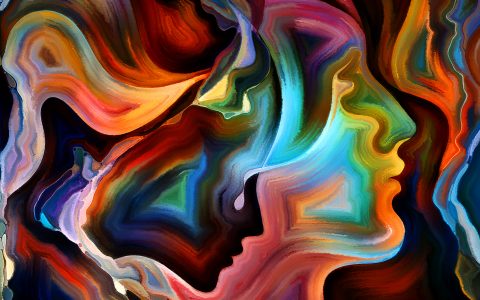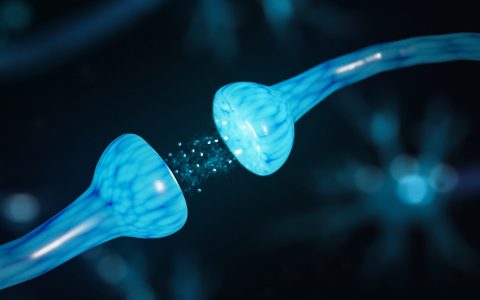The third quarter of this year was full big headlines for the cannabis industry. Epidiolex became the first cannabis-based medicine to gain FDA-approval in the United States, Coca-Cola and Budweiser are preparing to jump into the cannabis market, and cannabis companies are causing waves in the stock market. All of this excitement is enhanced by the groundbreaking research studies that deepen our understanding of cannabis’ vast potential to improve our health and wellness. Here are five of the most exciting scientific studies from this quarter.
Studies at a Glance:
The Entourage Effect in Rodent-Model Breast Cancer
The anti-tumor effect of cannabinoids is a young but growing area of scientific investigation. Numerous studies have demonstrated the anti-tumor effects of various cannabinoids and even some terpenes, independently. However, it’s unknown if these anti-tumor effects could be enhanced through the “entourage effect” of multiple cannabinoids and terpenes working together to enhance the treatment’s effectiveness.
As predicted, the whole-plant preparation had stronger anti-tumor effects than THC alone.
In a recent study by scientists in Madrid, the entourage effect was put to the test on breast cancer tumors in female mice. Scientists compared the effect of THC alone against a whole-plant cannabis preparation in the ability to limit tumor growth and kill its cells. As predicted, the whole-plant preparation had stronger anti-tumor effects than THC alone. Interestingly, a combination therapy of just the five most abundant terpenes in the preparation had no effect on tumor growth, either on its own or in combination with THC, suggesting that the anti-tumor properties of the whole-plant preparation resulted from a combination of the many cannabinoids.
These results provide critical support for the entourage effect, which remains mostly hypothetical for most clinical conditions. Yet, these studies of whole-plant extracts provide important insight that will lead to the generation of improved cannabis-based medicines. It’s important to note, that cancer treatment is not a one-size-fits-all model, and each cancer must be studied independently.
A Deeper Understanding of Cannabis’s Anti-Nausea Effects
Traditionally, scientists’ understanding of nausea has been less complete than our understanding of the processes underlying vomiting. A recent report by Canadian scientists provided important insight into brain mechanisms underlying nausea, and in doing so, identified CBD as an anti-nausea agent with potential to aid in the anti-nausea effects of THC and minimize its adverse effects.
A recent report identified CBD as an anti-nausea agent with potential to aid in the anti-nausea effects of THC and minimize its adverse effects.
The scientists reported that becoming nauseas is associated with an increase in the brain chemical, serotonin, in the brain’s insular cortex. Serotonin activation of the specific serotonin receptor type, 5-HT3, causes nausea. One of the main ways that THC reduces nausea is by reducing serotonin in this brain region, and therefore, reduces activation of the 5-HT3 receptor.
This study also revealed the CBD can reduce nausea by activating a different serotonin receptor, called 5-HT1A. In the insula, activating these receptors can reduce serotonin levels by blocking their release from brain cells.
Although untested in this particular study, the combination of THC and CBD may have profound anti-nausea effects through two distinct mechanisms:
- THC activation of cannabinoid type I receptors (CB1), which reduces serotonin release
- CBD activation of 5-HT1A
Together, this may reduce serotonin levels and the activation of the nausea-inducing 5-HT3 receptor. Since CBD can block some of THC’s adverse effects through actions elsewhere in the brain, the combinatorial approach may be the most effective and well-tolerated anti-nausea strategy for many individuals. However, this specific hypothesis warrants further investigation.
A Shift in Cannabis & Schizophrenia Theory
For decades, the prevailing belief has been that cannabis increases risk for developing schizophrenia. Three studies published this quarter shifted our understanding of the causal influence of cannabis and shed light on a potential mechanism for cannabis’ therapeutic benefits.
Instead of cannabis use increasing risk for schizophrenia, this study suggests that schizophrenia increases cannabis use, perhaps as a self-medicating tool.
Scientists can gain insight the role of genetic influencers by comparing an individual’s DNA with their behavior and personality traits. As more subjects are included in the assessment, predictive relationships may emerge. In this case, scientists identified a gene that was associated with cannabis dependence and schizophrenia. They then used statistical techniques to reveal that schizophrenia patients were more likely to use cannabis.
This study reverses our traditional understanding of the relationship between cannabis and schizophrenia. Instead of cannabis use increasing risk for schizophrenia, this study suggests that schizophrenia increases cannabis use, perhaps as a self-medicating tool.
How may cannabis serve as a self-medicating tool? According to two independently-conducted brain imaging studies, CBD can partially normalize brain activity. Schizophrenia is characterized by disorganized thinking and cognitive impairments which result from abnormal brain activity. In one study, scientists found that CBD increased the strength of the communication patterns between the striatum and the prefrontal cortex, two brain regions involved in cognitive processing.
In another study, scientists found that CBD improved brain function during a learning task in those with a high risk for schizophrenia compared to placebo. Together, these two studies support the use of CBD as an anti-psychotic treatment in schizophrenia and point to why the many individuals who turn to cannabis for self-medication should be directed towards products with higher levels of CBD.
Clinical Trial Finds Benefits of CBD in Autism
There has been an accumulation of positive anecdotal reports of cannabis’ therapeutic success in autism spectrum disorder, but it remains one notable area where the scientific studies have lagged. That seems to be changing.
The study was promising: 61% of parents felt that their children’s autism symptoms were improved by cannabis.
In an early-stage clinical trial of 60 Israeli children with autism spectrum disorder, scientists measured the effect of cannabis at a 20:1 CBD:THC ratio on a host of symptoms associated with the condition. The study was promising: 61% of parents felt that their children’s symptoms were improved by cannabis. Cannabis reduced anxiety in 39% and improved communication in 47% of the subjects. Further, these subjects had fewer disruptive behaviors and lower levels of perceived stress.
These exciting results have led scientists to launch a larger double-blinded placebo controlled study. Placebo-controlled studies are necessary to eliminate biased outcomes that are inherent in studies that rely on parental reporting. Despite the limitation of potential bias, this study represents the first formal investigation of cannabis in the treatment of autism spectrum disorder and its results are consistent with many of the positive anecdotal reports that have been shared over the years.
A Novel Target for Low-Dose CBD Is Identified
CBD has over 65 known targets in the brain and body which contribute to its wide spectrum of therapeutic benefits. However, the many targets make dosing CBD a challenge. As the CBD dose increases, so does the number of targets it affects. This may override the impact CBD has at lower doses and eliminate its therapeutic effectiveness. Identifying brain targets that CBD affects at low doses will make proper dosing easier, improve patient compliance, and reduce any negative effects that may occur due the interactions that high doses of CBD can have with the metabolism of other medications.
Identifying brain targets that CBD affects at low doses will make proper dosing easier, improve patient compliance, and reduce any negative effects that may occur.
Scientists working in Spain have recently revealed another CBD target that is affected at low doses. They demonstrate that CBD blocks the activity of sigma 1 receptors, which regulates some of the function of the brain’s NMDA receptors. Similar blockers of NMDA receptors are associated with dampening pain and improving outcomes after stroke.
In a series of experiments on mice, scientists infused low concentrations of CBD directly into the brain and measured its impact on pain responses and the extent of brain damage following a stroke. In the pain tests, CBD enhanced the pain-relieving effects of morphine, enabling the mice to withstand pain for longer. After stroke, mice who had been infused with CBD had less brain damage than those in the control group. In both cases, CBD was ineffective at reducing pain and improving stroke outcomes if the mice’s DNA was altered such that there were unable to produce the sigma 1 receptor.
Beyond the importance of the sigma 1 receptor to CBD’s therapeutic benefits, these studies provide further support to the idea that CBD may protect against brain damage due to injury or stroke. There’s a growing number of studies that have found that having CBD in the body prior to a stroke limits its damage. This is indeed an exciting area of future research.
















